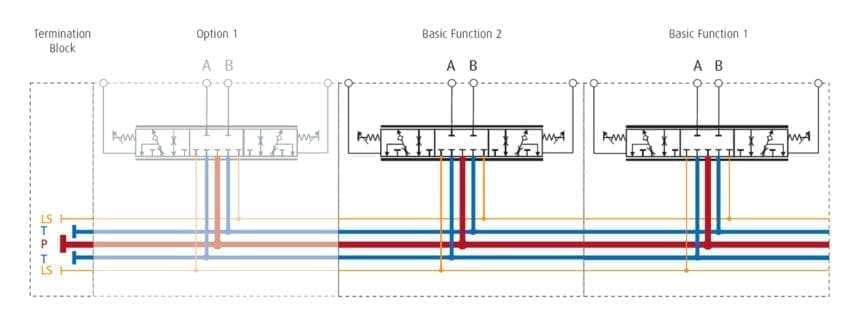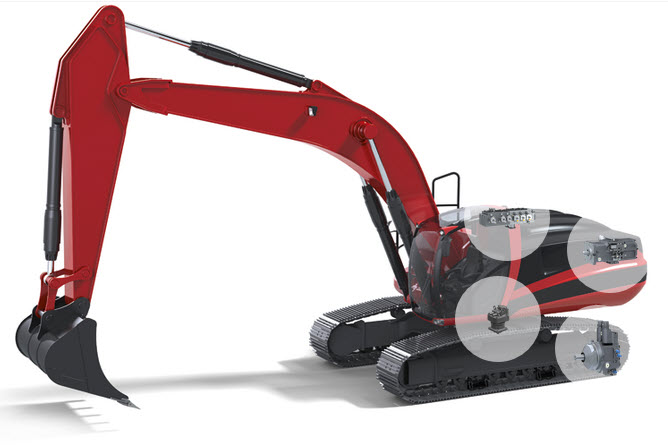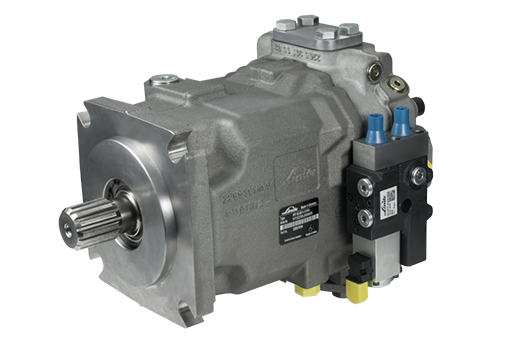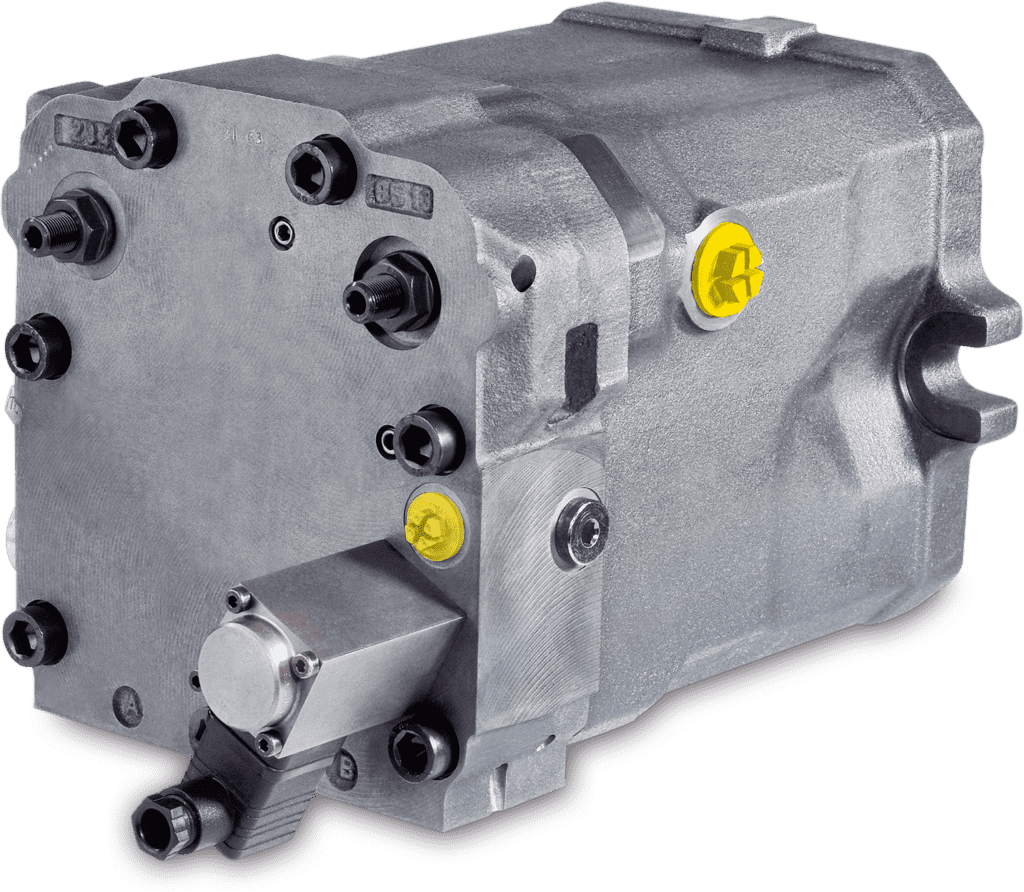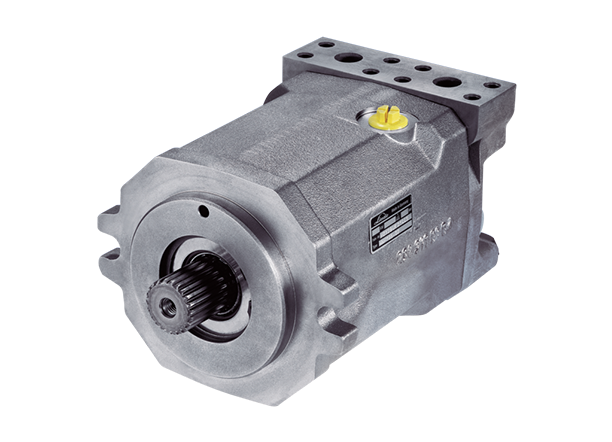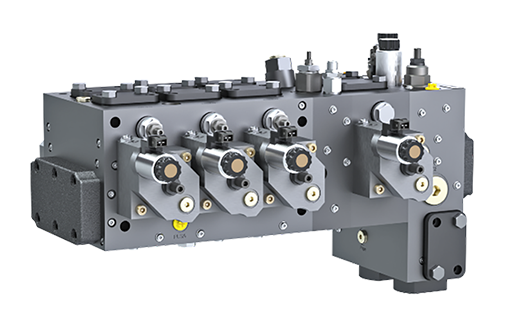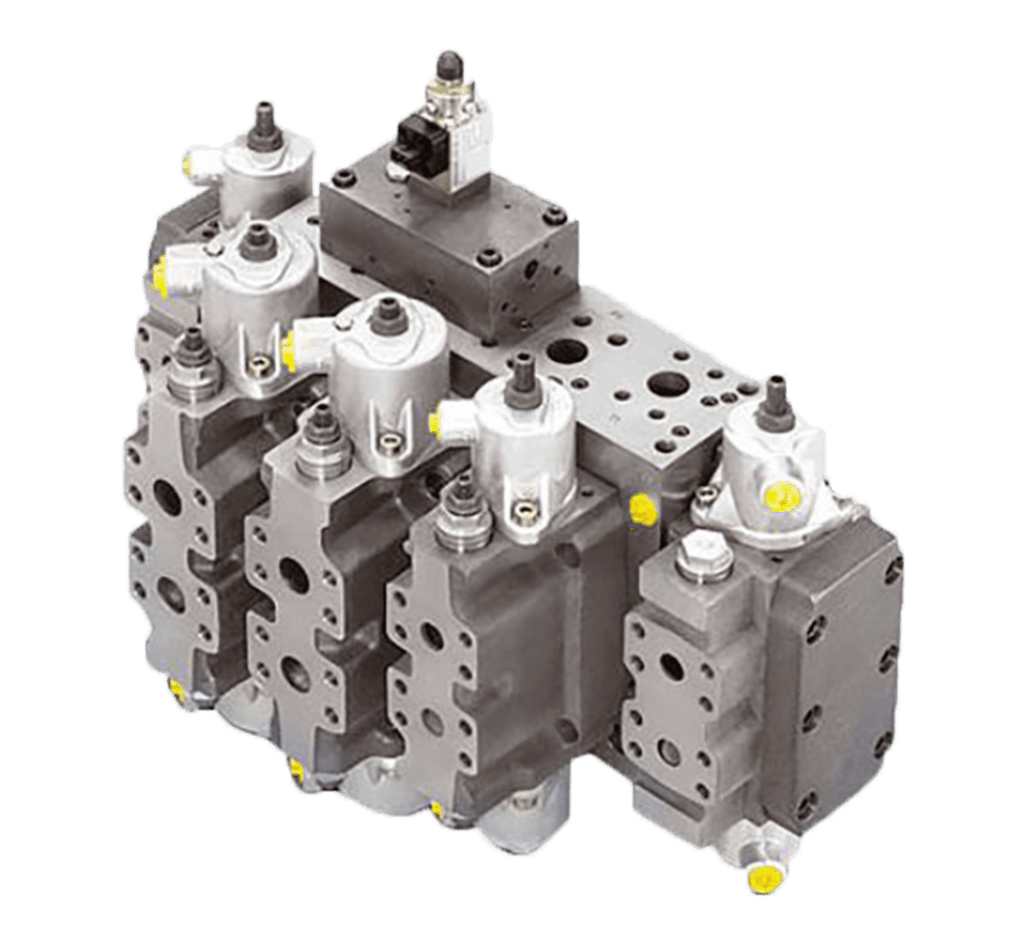14 t - 90 t
36 t
1x HPR 165-02 D (open circuit double pump)
1x VW30M3/6 (control valves)
2x HMV 135-02 (drive motors)
1x HMF 135-02 P (slewing gear motor)
- High performance with compact dimensions due to double pump and directional valves in monoblock design
- Easy expandability of the LSC system without new tuning
- Short regeneration paths in the directional control valve
- Single circuit or multiple circuit systems, combined dual circuit
- Hydraulic or electro-hydraulic control
- LSC+
Crawler Excavator
The LSC system is high-performance and adjustable. Machines with LSC are not only intuitive, easy to use, and versatile, but are also extremely powerful, as this example of a tracked excavator shows.
The control plate in the monoblock design is impressively compact. The real benefits can be seen inside: optimised supply channels with large cross-sections supply the directional control valves, which each feed up to 600 liters of oil per minute to the actuators. For extreme demands, functions can also be fed by combining multiple valves. The regeneration function of the actuator, i.e. the back-flow of the oil from the piston side to the rod side of the boom, for example, is performed in the directional control valve itself with minimum deflection.
The double pump in the design example provides the hydraulic power for the machine with 700 liters of oil per minute and can be used as a single-circuit or double-circuit pump. As such, the bucket has impressively high tear-out force and the machine demonstrates high handling performance with the low consumption and excellent operation that typifies the LSC system. Not only can it move many cubic meters of material per hour, but also per liter of fuel spent.
Basic machines for demolition work stand out thanks to another feature of LSC technology: the parallel architecture. Despite the compact design of the monoblocks, these also allow additional functions to be added later. Sandwich valves with a range of nominal sizes can be inserted between the existing sections and the cover plate and use pump and tank channels as well as the LS signal. However, the real advantage is that the system does not need to be recalibrated neither the orifices need to be exchanged.
